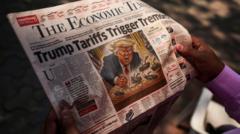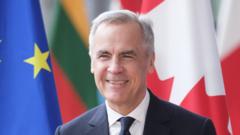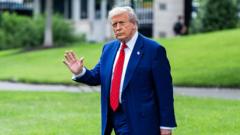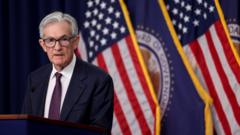As India seeks to navigate challenges posed by global trade dynamics and protectionist policies, experts warn against complacency while recognizing the potential benefits of its trade-shy stance.
India’s Trade Strategy: A Shield Against Global Slowdown or a Road to Isolation?

India’s Trade Strategy: A Shield Against Global Slowdown or a Road to Isolation?
Amid rising protectionism, India’s inward-focused trade policies may provide a buffer against global economic volatility, but the country needs to adapt to seize new opportunities.
India's position as the world's fifth-largest economy is under scrutiny as increasing global protectionism threatens trade-dependent countries. Despite its growth, India's historical tendencies towards protectionism have limited its global competitiveness, with export figures hovering below 2% of global trade. However, as the world grapples with tariff-led economic slowdowns, India's inward-focused growth model may provide a temporary buffer against these external shocks.
Economist Rajeswari Sengupta suggests that India's minimal exposure to global trade could work in its favor, allowing it to sustain growth around 6% while other economies face tariff pressures. This unique position could enhance India's image as a resilient economy backed by its large domestic market. However, she warns that to capitalize on potential opportunities, India must adopt a more proactive approach to trade.
Historically, India's trade policies have oscillated between protectionism and liberalization. Significant changes occurred in the early 1990s when a balance-of-payments crisis prompted a shift towards reduced import controls and exchange rate adjustments. The resulting growth in exports from $75 billion to over $400 billion over a decade illustrated the effectiveness of a more open trade policy.
Nonetheless, the pushback against trade reforms, including the recent period of heightened protectionism since 2018, raises questions about the long-term effectiveness of initiatives like Prime Minister Narendra Modi's "Make in India" campaign. Critics argue that such policies have favored certain sectors while stifling competition and efficiency.
With the United States adopting an inward trade approach and China facing scrutiny, India has an opportunity to emerge as a reliable trade partner for countries in the European Union searching for alternatives. To leverage this moment, experts urge India to lower tariffs, enhance export competitiveness, and signal availability for global trade partnerships, particularly in sectors like textiles and small-scale manufacturing, which could fuel growth in the coming years.
However, experts caution that the country's rapid diversification requires significant reforms to its trade policies, including simplification of tariffs and improvement in processes related to the Goods and Services Tax (GST). Without proactive measures, India's window to play a significant role in the global market may close, highlighting the urgent need for strategic adjustments to its trade stance.
As the U.S. maintains its tariff strategy, risks loom for India's exports, with estimates indicating a potential 6.4% decrease in exports to the American market in the upcoming year. Achieving balanced trade agreements with major economies, alongside strong domestic reforms, becomes crucial for India's sustained growth and integration into the global economy moving forward.
Economist Rajeswari Sengupta suggests that India's minimal exposure to global trade could work in its favor, allowing it to sustain growth around 6% while other economies face tariff pressures. This unique position could enhance India's image as a resilient economy backed by its large domestic market. However, she warns that to capitalize on potential opportunities, India must adopt a more proactive approach to trade.
Historically, India's trade policies have oscillated between protectionism and liberalization. Significant changes occurred in the early 1990s when a balance-of-payments crisis prompted a shift towards reduced import controls and exchange rate adjustments. The resulting growth in exports from $75 billion to over $400 billion over a decade illustrated the effectiveness of a more open trade policy.
Nonetheless, the pushback against trade reforms, including the recent period of heightened protectionism since 2018, raises questions about the long-term effectiveness of initiatives like Prime Minister Narendra Modi's "Make in India" campaign. Critics argue that such policies have favored certain sectors while stifling competition and efficiency.
With the United States adopting an inward trade approach and China facing scrutiny, India has an opportunity to emerge as a reliable trade partner for countries in the European Union searching for alternatives. To leverage this moment, experts urge India to lower tariffs, enhance export competitiveness, and signal availability for global trade partnerships, particularly in sectors like textiles and small-scale manufacturing, which could fuel growth in the coming years.
However, experts caution that the country's rapid diversification requires significant reforms to its trade policies, including simplification of tariffs and improvement in processes related to the Goods and Services Tax (GST). Without proactive measures, India's window to play a significant role in the global market may close, highlighting the urgent need for strategic adjustments to its trade stance.
As the U.S. maintains its tariff strategy, risks loom for India's exports, with estimates indicating a potential 6.4% decrease in exports to the American market in the upcoming year. Achieving balanced trade agreements with major economies, alongside strong domestic reforms, becomes crucial for India's sustained growth and integration into the global economy moving forward.




















